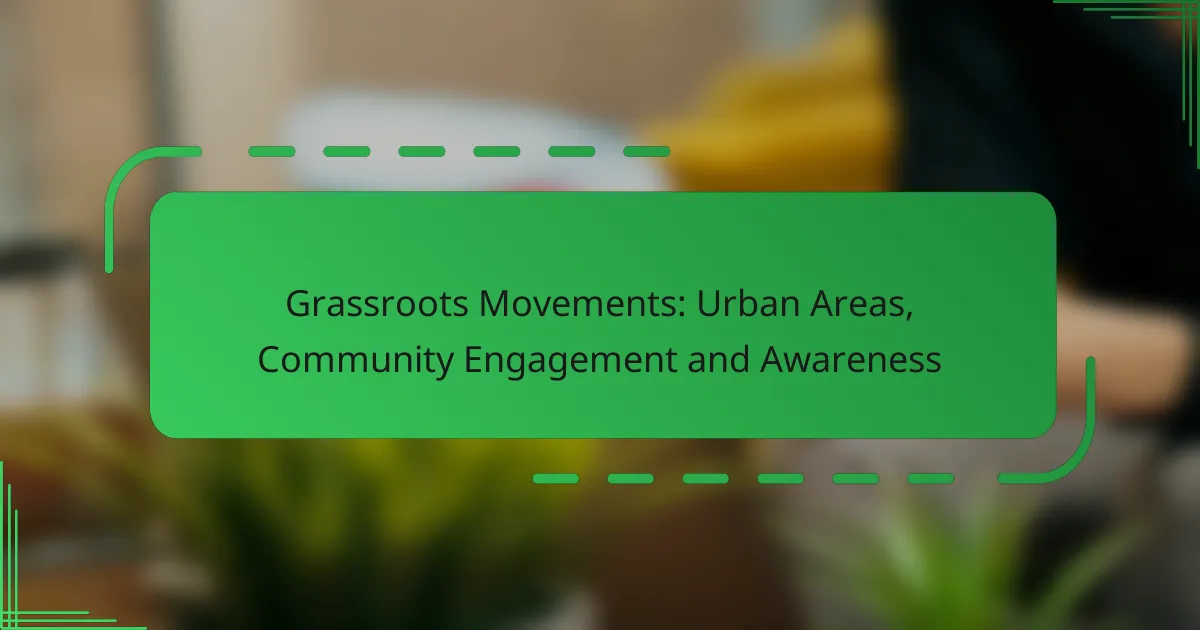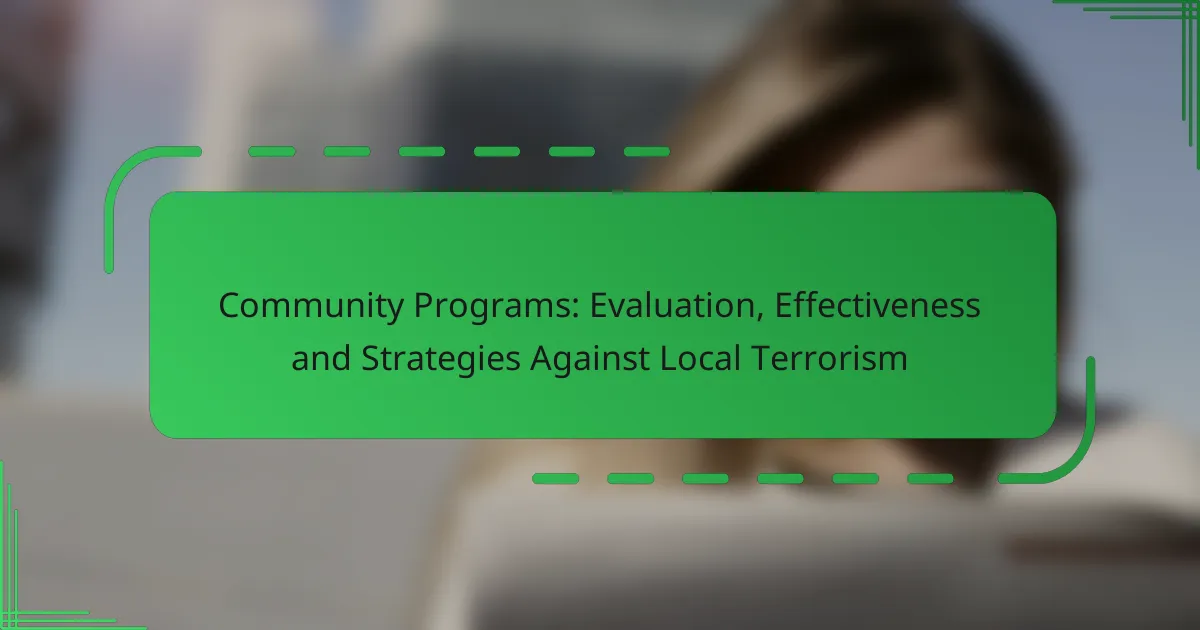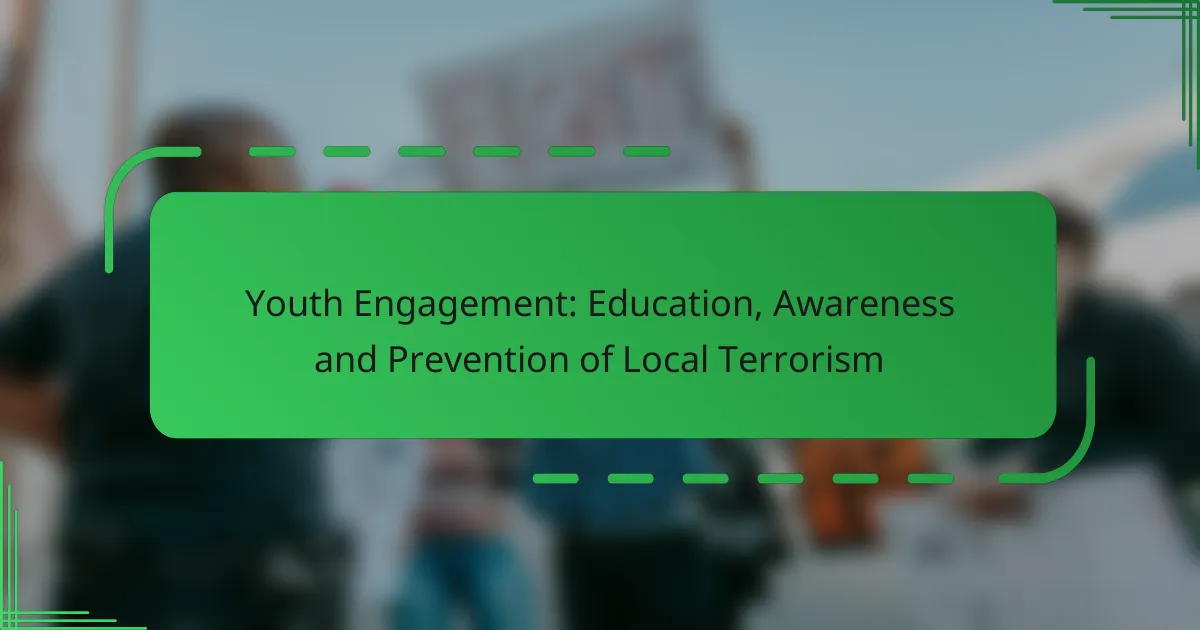Grassroots movements play a crucial role in enhancing community engagement within urban areas by encouraging residents to actively participate in local issues. By empowering individuals and fostering collaboration, these movements create a more connected and vibrant community, ultimately leading to meaningful change.
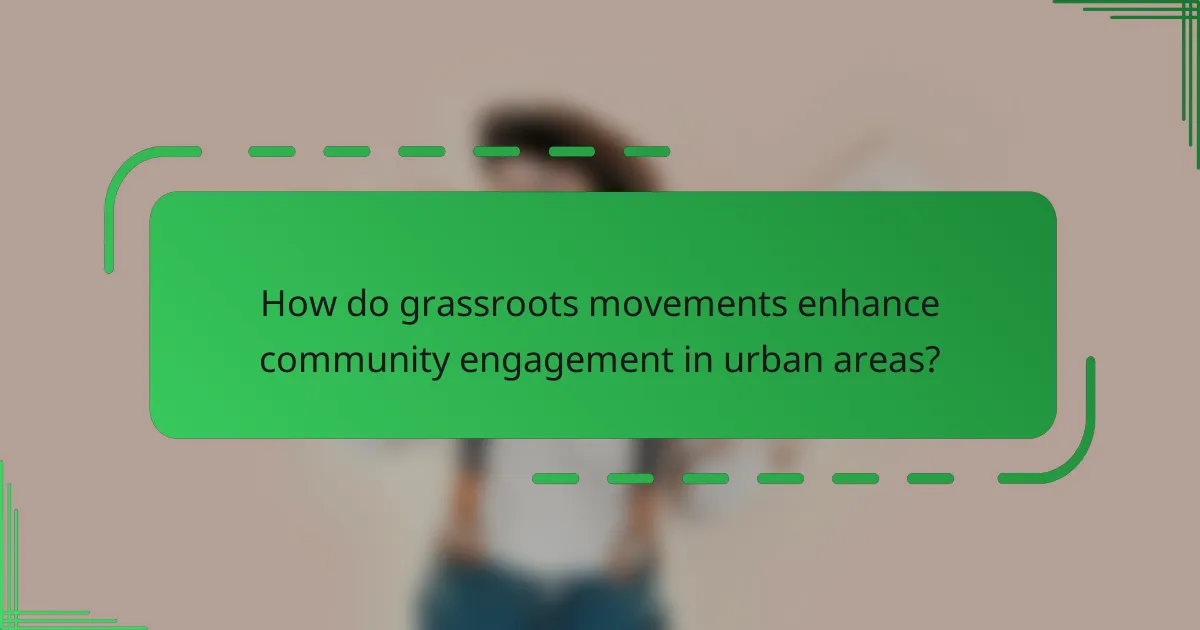
How do grassroots movements enhance community engagement in urban areas?
Grassroots movements significantly boost community engagement in urban areas by fostering active participation and collaboration among residents. These movements empower individuals to take ownership of local issues, leading to a more vibrant and connected community.
Increased local participation
Grassroots movements encourage local participation by creating platforms for residents to voice their concerns and ideas. Community meetings, workshops, and social media campaigns serve as venues for individuals to engage actively in local governance and decision-making processes.
For instance, neighborhood clean-up events or community gardens not only address environmental issues but also draw in residents who may not have previously participated in civic activities. This hands-on involvement cultivates a sense of belonging and responsibility towards the community.
Strengthened social networks
Through grassroots initiatives, social networks within urban areas become more robust as residents connect over shared goals. These movements often facilitate collaboration between diverse groups, fostering relationships that transcend socioeconomic and cultural barriers.
For example, a local advocacy group might unite residents from various backgrounds to address housing issues, leading to stronger ties and mutual support. This interconnectedness enhances community resilience, making it easier to mobilize for future challenges.
Empowerment of marginalized voices
Grassroots movements play a crucial role in amplifying the voices of marginalized communities in urban settings. By prioritizing inclusivity, these initiatives ensure that underrepresented groups have a platform to express their needs and advocate for their rights.
Programs that focus on issues like affordable housing or access to education often highlight the experiences of those most affected, driving policy changes that reflect their concerns. Engaging these voices not only enriches community dialogue but also leads to more equitable solutions.

What strategies are effective for initiating grassroots movements?
Effective strategies for initiating grassroots movements include building coalitions, utilizing social media, and organizing community events. These approaches foster engagement, raise awareness, and mobilize support within urban areas.
Building coalitions with local organizations
Forming coalitions with local organizations enhances the credibility and reach of grassroots movements. Collaborating with established groups can provide access to resources, networks, and expertise that are essential for success.
Identify organizations that share similar goals and values. For example, partnering with environmental groups can amplify efforts in sustainability initiatives. Regular meetings and joint campaigns can strengthen these alliances.
Utilizing social media platforms
Social media platforms are powerful tools for grassroots movements, allowing for rapid dissemination of information and engagement with a broader audience. Effective use of platforms like Facebook, Twitter, and Instagram can help raise awareness and mobilize supporters quickly.
Create compelling content that resonates with your target audience. Use visuals and storytelling to convey your message. Regular updates and interactive posts can keep followers engaged and encourage them to share your cause.
Organizing community events
Community events serve as a vital strategy for grassroots movements, providing a platform for direct engagement and interaction. These events can range from workshops and town hall meetings to rallies and clean-up days.
Plan events that cater to the interests of the community. For instance, hosting a local festival can attract diverse participants and foster a sense of unity. Ensure to promote these events through local media and social channels to maximize attendance and impact.

How can urban residents get involved in grassroots movements?
Urban residents can engage in grassroots movements by actively participating in their communities through various avenues. This involvement not only fosters local change but also strengthens community bonds and awareness.
Joining local advocacy groups
Joining local advocacy groups is a direct way for urban residents to contribute to grassroots movements. These groups often focus on specific issues such as environmental protection, social justice, or public health, allowing individuals to align their passions with actionable initiatives.
To find advocacy groups, residents can check community boards, social media platforms, or local government websites. Many groups welcome new members and provide training or resources to help individuals get started.
Participating in town hall meetings
Participating in town hall meetings is crucial for urban residents who want to voice their concerns and influence local policies. These meetings typically allow residents to discuss community issues, propose solutions, and engage with local officials.
Residents should check their city or town’s official website for meeting schedules and agendas. Preparing questions or comments in advance can enhance participation and ensure that important topics are addressed.
Volunteering for community projects
Volunteering for community projects is an effective way for urban residents to support grassroots movements while making a tangible impact. Projects may include neighborhood clean-ups, food drives, or educational workshops, all of which rely on community involvement.
To get involved, residents can reach out to local non-profits or community centers. Many organizations offer flexible volunteer opportunities that accommodate different schedules, making it easier for individuals to contribute their time and skills.
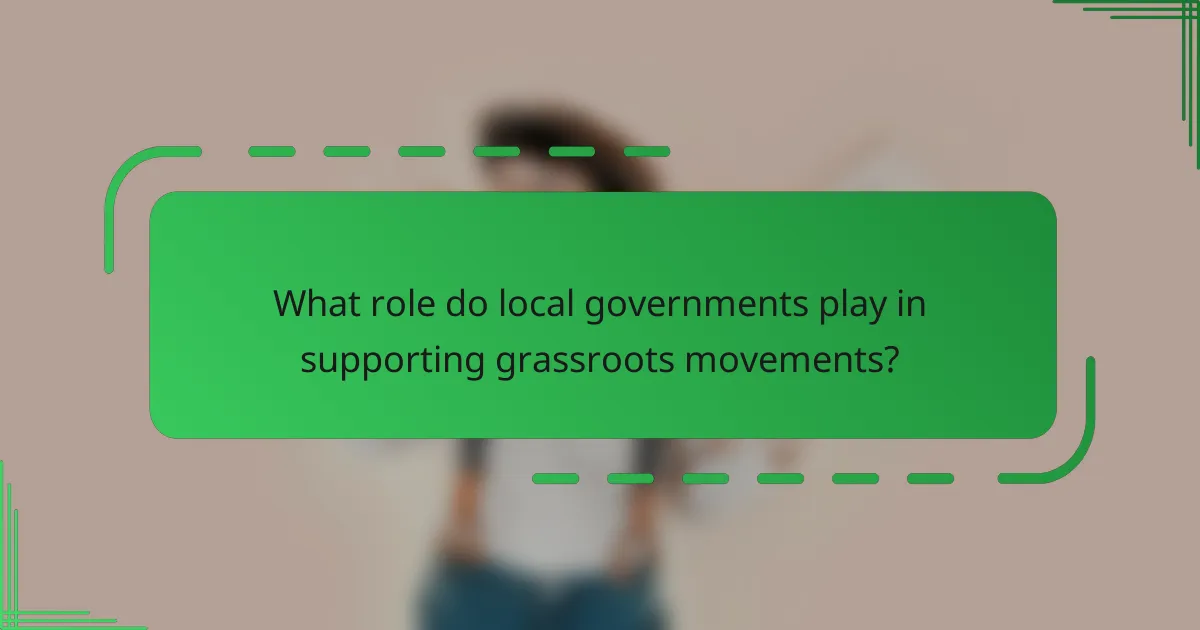
What role do local governments play in supporting grassroots movements?
Local governments play a crucial role in supporting grassroots movements by providing essential resources, facilitating community engagement, and collaborating on initiatives that address local needs. Their involvement can enhance the effectiveness and reach of these movements, fostering a more engaged and informed citizenry.
Providing funding and resources
Local governments often allocate funding to grassroots movements through grants and subsidies, which can significantly bolster their activities. This financial support can cover costs such as event organization, outreach materials, and community projects, allowing movements to operate more effectively.
In addition to funding, local governments may provide resources like meeting spaces, promotional platforms, and access to training programs. These resources can empower grassroots organizations to mobilize community members and amplify their messages.
Facilitating public forums
Public forums hosted by local governments create opportunities for grassroots movements to engage with citizens directly. These forums can take the form of town hall meetings, workshops, or public consultations, allowing community members to voice their concerns and ideas.
By facilitating these discussions, local governments help ensure that grassroots movements are informed by the community’s needs and perspectives. This engagement can lead to more relevant initiatives and stronger community ties.
Collaborating on community initiatives
Collaboration between local governments and grassroots movements can lead to impactful community initiatives that address pressing local issues. By working together, both entities can pool resources, share expertise, and enhance the visibility of their efforts.
For example, local governments may partner with grassroots organizations to implement sustainability projects, improve public health, or promote social justice. Such collaborations not only strengthen the initiatives but also foster a sense of shared responsibility and ownership within the community.
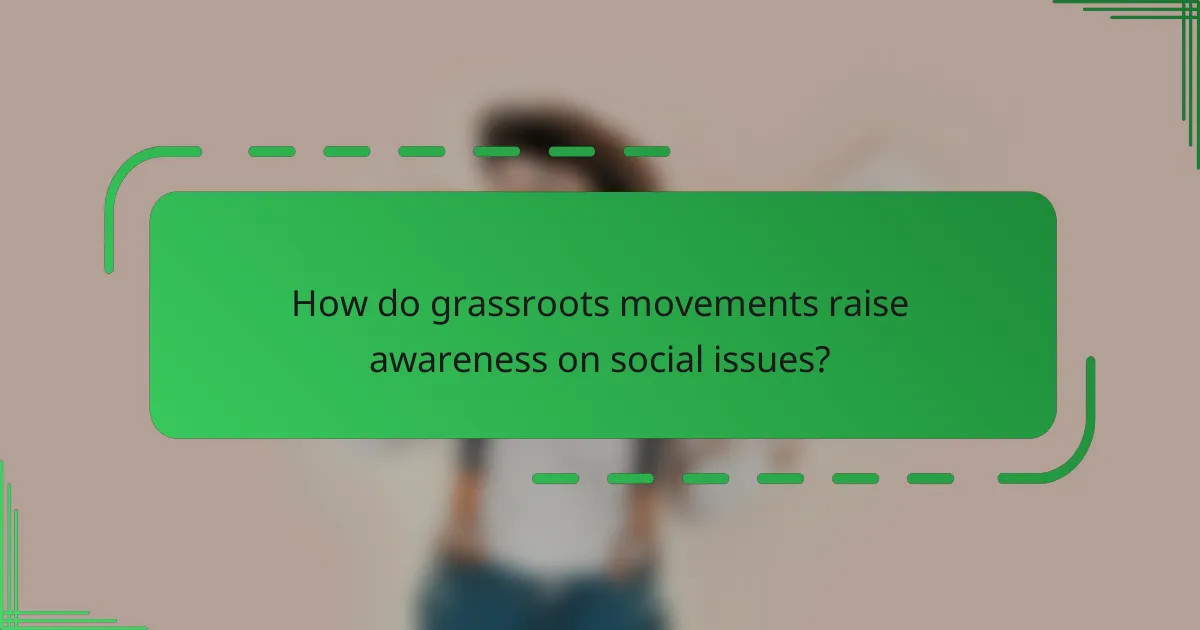
How do grassroots movements raise awareness on social issues?
Grassroots movements raise awareness on social issues by mobilizing community members to engage in collective action and education. They utilize various strategies to inform the public, influence policy, and create a sense of urgency around specific concerns.
Conducting educational workshops
Educational workshops are a fundamental tool for grassroots movements to disseminate information and foster dialogue. These workshops can cover a range of topics, from environmental issues to social justice, and often involve interactive elements to engage participants actively.
To maximize impact, workshops should be tailored to the community’s specific needs and interests. Using local experts or community leaders as facilitators can enhance credibility and encourage participation.
Launching awareness campaigns
Awareness campaigns are designed to inform the public about social issues and mobilize support for change. These campaigns can take various forms, including social media initiatives, public demonstrations, and informational flyers distributed in local neighborhoods.
Effective campaigns often use compelling visuals and storytelling to resonate with the audience. Setting clear goals, such as increasing event attendance or gaining media coverage, helps measure success and adjust strategies as needed.
Engaging with local media
Engaging with local media is crucial for amplifying the message of grassroots movements. By building relationships with journalists and media outlets, organizations can secure coverage that raises awareness and informs the broader community about their causes.
Press releases, opinion pieces, and interviews are effective ways to communicate key messages. It’s important to provide clear, concise information and to highlight the local impact of the issues being addressed to capture media interest.
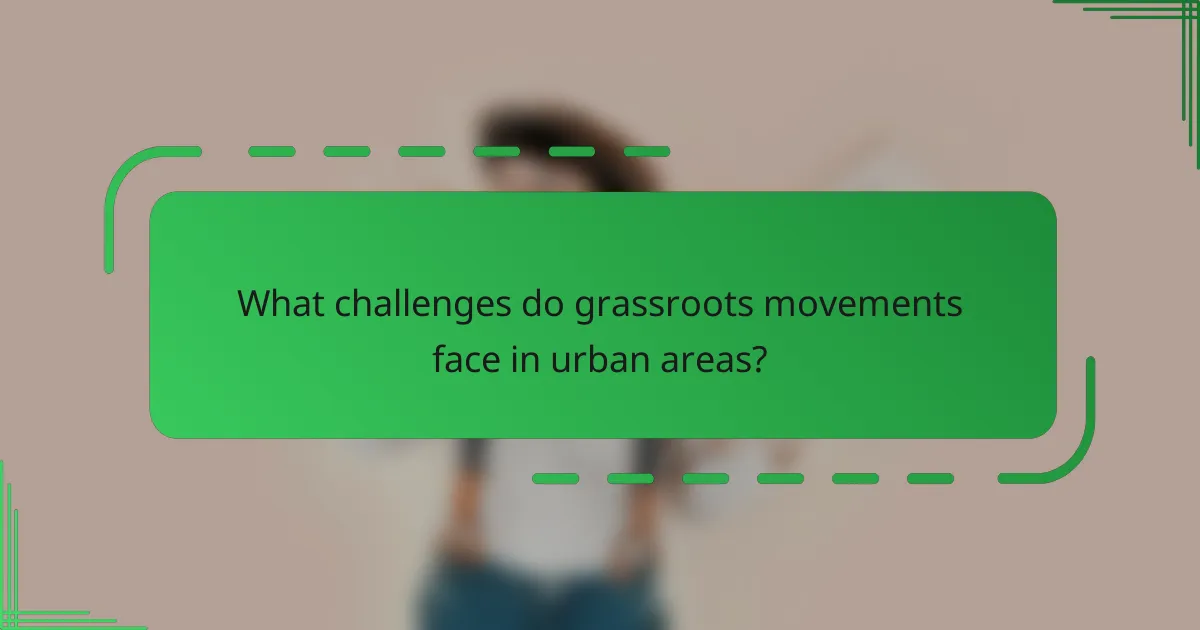
What challenges do grassroots movements face in urban areas?
Grassroots movements in urban areas encounter several challenges, including limited resources, bureaucratic obstacles, and community disengagement. These factors can hinder their ability to mobilize support and effect change effectively.
Resource limitations
Grassroots movements often operate with minimal funding and volunteer support, which can restrict their outreach and impact. Many rely on small donations, grants, or crowdfunding, making financial sustainability a constant concern.
To overcome resource limitations, movements can prioritize strategic partnerships with local businesses or organizations that share similar goals. This collaboration can provide additional funding, resources, and visibility.
Bureaucratic obstacles
Urban environments typically have complex regulatory frameworks that can pose significant hurdles for grassroots initiatives. Navigating permits, zoning laws, and city regulations can be time-consuming and frustrating.
Understanding local laws and building relationships with city officials can help grassroots movements mitigate these bureaucratic challenges. Engaging in advocacy efforts to influence policy changes can also create a more favorable environment for their activities.
Community disengagement
Many urban residents may feel disconnected from grassroots movements due to a lack of awareness or perceived relevance. This disengagement can lead to low participation rates and limited community support.
To foster engagement, grassroots movements should focus on clear communication and outreach strategies. Hosting community events, utilizing social media, and sharing success stories can help raise awareness and encourage participation among residents.
